The most important fossil reveals the mystery of Life
In the world of paleoantologi, no fossil findings that according to the theory of researchers known as the first in this planet. Although there are many theories that circulate and scientific value that is therein, the fossils had become the subject of the research is very interesting and intriguing imagination.
1. The First Bird
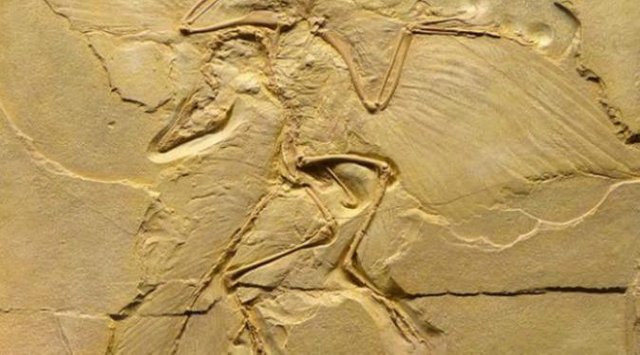
According to the theory of paleontologists, Archaeopteryx lithographica is transitional fossils, namely a "missing link", between dinosaurs and birds today. Thus he can be called as the first bird. This fossil found in Germany in 1860 as a mixture of birds and reptiles. The Archaeopteryx itself comes from the ancient Greek language which means "ancient wings" or "ancient feathers"Before extinct, at the time of the end of the Jurassic around 150 million years ago, Archaeopteryx lived in the area that is now known as Bavaria, Germany. At that time, Europe is still very close to the equator and iklimnya warmer.The weight of an Archaeopteryx ranged between 0.8 to 1.1 kg and size with the ravens today. This animal has a tail around 50 cm, very long compared to the size of the body. Based on the feathers and wings, paleontologists suspect the animal can fly.
2. The first mammal
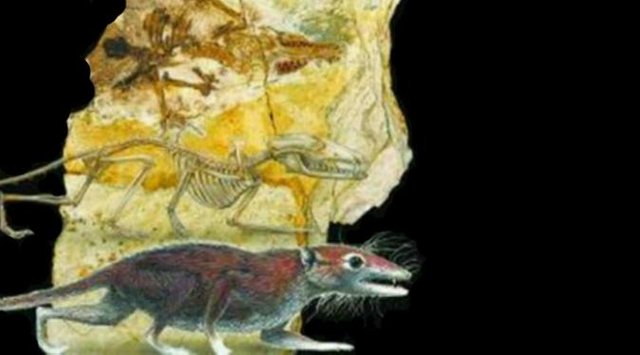
The experts paleoantologi proposed the theory that a fossil unearthed in the east sea China shifted the date of the evolution of mammals to 35 million years earlier. that there is a first evidence of mammals that have the uterus and became the first ancestor most mammals today.
Luo, experts paleoantologi Zhe-Xi China that are part of a team of scientists under the leadership of the Museum of Natural History Carnegie revealed in Nature magazine that Juraima sinesis leaves similar cecurut living in China around 160 million years ago in the Jurassic. Juraima suspected as the first evidence of the fossils called eutheria and includes mammals that have the womb, namely animals that provide for the needs of life before birth through the placenta. As the oldest fossils of other placental mammals, Juramaia become fossil evidence time fork eutheria group away from a group of other mammals.
3. Reptiles and animals Early Mainland
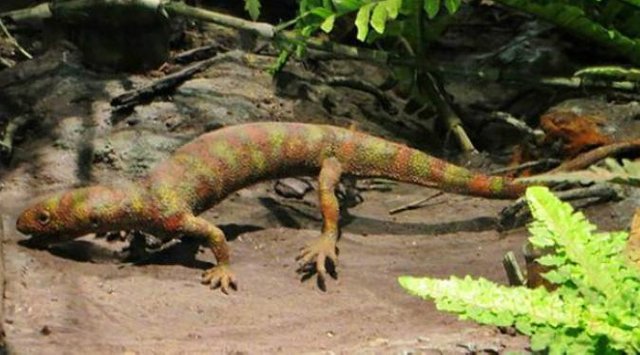
Hylonomus lyelli live around 315 million years ago at the time of the Upper Carboniferous and known as the first reptiles. In addition, this animal is a first adapt to live on land. At the time is also known as the coal era or Pennsylvania, Hylonomus developed upto 20 cm, including the tail. Similar animals lizards which is this insect predators eat the prey of the smaller prey such as raise snails, kulum-kulum, and other small insects. According to the theory, animal females lay their eggs in the land with a damp cloth and protected environment. Hylonomus lyelli fossils found in frozen slab sandstone by the sea in Joggins, Nova Scotia (Canada) and are mentioned in on the Origin of Species by Charles Darwin.
William Dawson, geologist and former Rector of McGill University find Hylonomus on 1852. The name Hylonomus is a combination of two words, one of the ancient Greek language which means "wood" and the Latin word that means "rats forests". The new fossil bones Hylonomus found in heritage bay some "tree scales". This tree has a diameter of about 1 meters high with 30 meters and often grow in swamps and along the rivers in the east North America.
4. The First Tetrapods
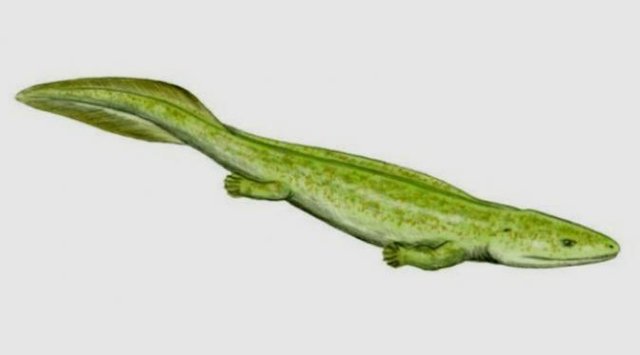
Elginerpeton pancheni fossils dated to the Devonian Age end in Scat Craig, Scotland who had calculated sarcopterygian (fish) unknown. In the early 1990s, this fossil re-examined by Per Ahlberg, an expert paleantologi Sweden concluded that the animal is actually tetrapods, four-legged animals. The materials from the fossil record that is known that the two oldest tetrapod fossils, namely Obruchevichthys and Elginerpeton, have a close relationship. Fragments of bone fragments Elginerpeton includes among others the hip and shoulders, fragments from the upper and lower jaw, dry bones and the thigh bone. No more fragments that may be derived from the bones of the arms of the future. By doing ekstrapolasi data, scientists can predict the length of the animal around 1.5 meters. His bones posseses characteristic of tetrapods other that ) is a chance to create a confused scientists. For example, jaws Elginerpeton as derived from fish with legs and pelvis from Ichthyostega are, a kind of living amphibians. In addition, shoulders animals is very similar to the tetrapod Tulerpeton and Hynerpeton, so that the need to the findings of other fossils to ensure.
5. The first insect, Rhyniognatha Hirsti
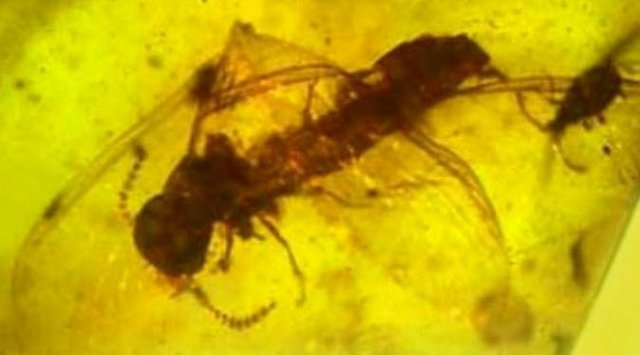
Long stored in the drawer museum, Rhyniognatha hirsti is the oldest fossils of insects found. These findings force adjustment of the calendar is the origin of insects to 80 million years earlier and can explain about the evolution of flight in animals. This fossil found outside of Aberdeen in Scotland in the form of winged insects aged 400 million years. Robin John Tillyard, an expert entomologists Australia, learn the fossil in the 1920s but cannot be sure that it is an insect. After that the fossil record is stored and forgotten in the Museum of Natural History in London. While doing research for a book,an expert U.S. entomologists named David Grimaldi of the American Museum of Natural History in New York with Michael Engel from the University of Kansas in Lawrence, finding fossils Rhyniognatha and the rest watch them with the zoom bar. In the New Scientist article on 11 February 2004, Engel says, "Today, the microscope we are far better than that used by Tillyard and when we rest watch them, we completely dumbfounded." According to them, animals cannot be considered primitive and have lower jaw is so great that is suspected as a relish that greedy.
6. The First fish with Jaws
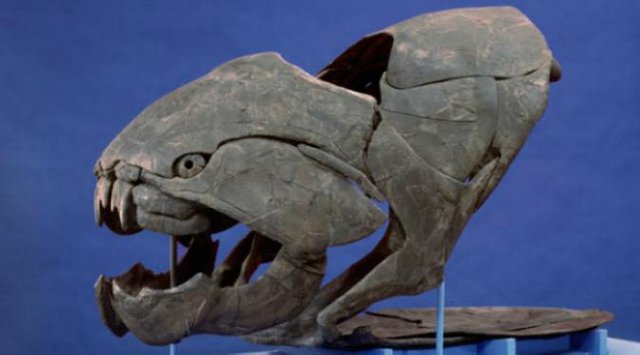 '
'
Around 300 million years ago, most areas in Ohio east of the sea covered by the sea subtropical regions in mainland with various types of life. The oldest predators, the biggest and most terrifying on the Devonia is Dunkleosteus terrelli, a fish is able to bite the ancient shark to split in two. Dunkleosteus terrelli length can reach 6 meters with the weight of more than 900 kg. These animals are equipped with large skull consisting of encircling the bones back and forth seems like scissors death. This animal jaw very sophisticated can sharpen itself. The Department of Transportation Ohio is starting the construction of roads Interstate 71 on 1966 when find archaeological site and materials the sediment rich in Big Creek Valley which still continue to provide the findings of the fossil record until now.
7. The First Land plants, Kriptospora Moss
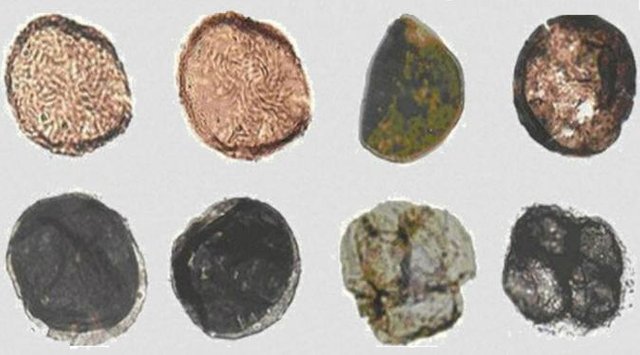
Land plants which is known as the first is the heart of moss. The evolution of land plants must get dragged away backward ten million years to become dated 472 years with the existence of the first land plants findings in Argentina. According to a report in the journal of New Pyhtologist, new fossil specimens found is kriptospora from a heart of moss, namely a simple plants without roots or tree system. Thus the seaweed was suspected as the ancestor of all land plants. A change most feeling in the climate of this planet caused by the presence of the plants of the land so that the atmosphere that they produce so that allows the existence of life as we know now. According to a BBC article on 12 October 2010, scientists Claudia Rubinstein and a team from the Department of Paleontology, Argentine Institute of Snow, Ice and Environmental Research In Mendoza, Argentina, finding fossils spores in hollows Andes, Argentina northwest. The team suspect that fossil aged 472 to 499 million years. The record of the oldest plants previously also refers to the kriptospora moss found in the Czech Republic and Saudi Arabia. Longevity 461 to 463 million years.
8. The First crustaceans, Canadaspis Perfecta
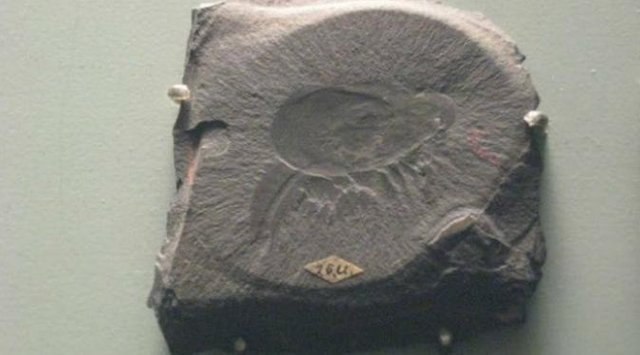
According to the book The Biology of crustaceans, Canadaspis perfecta may very well be the first and oldest crustaceans and very widespread. His own name refers to a fossil area Canada. Perfecta Canadaspis has great shells almost similar seashell turtles. The shell protects the top of the body and have some sharp thorns that according to the scientists become a refuge for his eyes. This animal glance like lobster without capit. From the physical view this animal allegedly is a basic animal samudra and search for food in the bottom of the sea. Allegedly, the animals devoured with how to thrust a 'feet' into the mud, meanwhile thorns remove its hedge menapis food pellets from the mud. Again, Canadaspis classified as crustaceans. But there are a number of other scientists who consider it is classified as a or antropoda euarthropoda "true". The age of the fossil Canadaspis perfecta ranged between 485 and 541 million years.
9. The First vertebrates, Pikaia
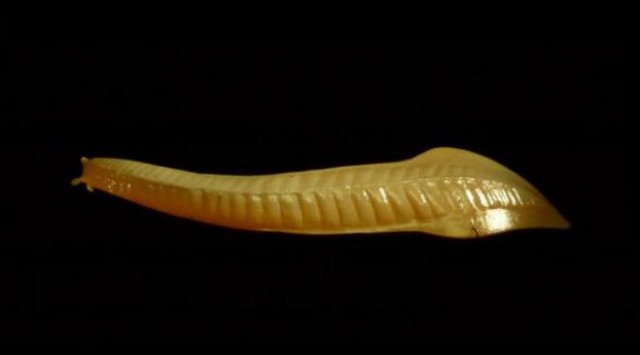
At the time of the Cambria, merebaklah Pikaia, which is one of the most interesting findings and most frequently discussed throughout the Cambria. ) was first described by Charles Walcott in 1911. In 1979, Simon Conway Morris found that the structure of the anatomy of the fossil record, known as proto-notochord which later developed into the first true chordate, or also known as vertebrates (bony creature back). However, mentions Pikaia as living bony backbone leads to the understanding that one, as though he is the ancestor of all vertebrates including man. According to the theory, Pikaia have snatches up and eksoskeleton (outside) framework in some segments such as insects today. Even though the two this is a characteristic of living invertebrates, namely living without the backbone. In 1911, Pikaia counted as a kind of polychaete, or worms bersegmen. Now the scientists argue that the animal is more similar with lancelet, a kind cephalocordata similar to leech. Not much is known about the animals, what hunted, or what is eaten, despite suspected it is animals can swimmers glide in water while absorbing the details of the food while late. This fossil also allegedly does not have the head so that the more confusing scientists.
10. The First evidence of life, Stromatolite
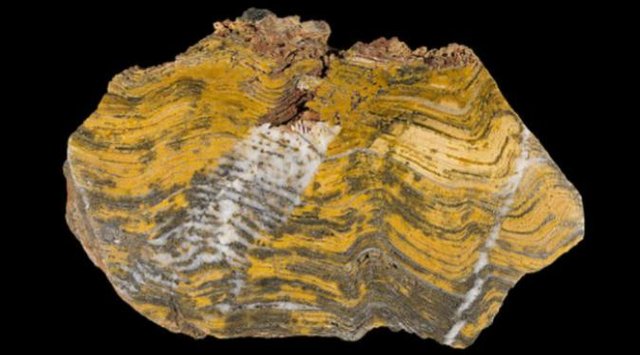
Stromatolite suspected as mud that become the fossils with the assessment of the age of 2.3 billion years. Actually, the fossil record is a matter of cyanobakteria deposits found in the Precambria. In addition as the fossil known as the oldest Stromatolite also became the only source of information about the life of the earliest time on this planet. With forms such as the sheets, layer Stromatolite can contain biological material from thousands of years. Stromatolite mainly contains fossils from the life of a single cell (prokaryotik) which symbolises the life on earth all the time, including in the present. These fossils found in a layer of rock form of sheets, form of column and order of the pads. There are still Cyanobakteria until now in various environments such as rivers, lakes and even the land. Without the nucleus of the miracle of DNA, they are seen as a form of carbon-based the simplest life. During the 2 billion years forms of life on this planet is just bacteria and cyanobakteria photosynthesis. Although simple, cyanobakteria photosynthesis most influential on the biggest changes that never experienced the earth. Even only through the process of photosynthesis, bacteria the bacteria are a source of oxygen in the earth. So, do not regard lightly.
Listverse.com
Ever since i watched Jurassic park this topic of fosils intrigues me. Thanks for the great info. Interesting...i did not know this.
I am a downvote bot. Contact @pharesim at slack if you think I am misbehaving. Please help fighting spam! Upvote this post to strengthen the bot, downvote the parent post if it has positive upvotes.